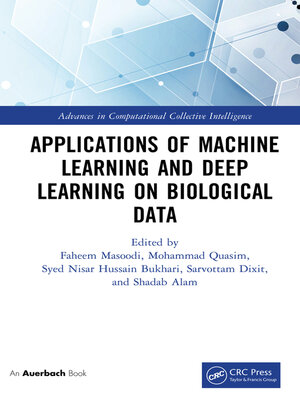Applications of Machine Learning and Deep Learning on Biological Data
ebook ∣ Advances in Computational Collective Intelligence
By Faheem Masoodi

Sign up to save your library
With an OverDrive account, you can save your favorite libraries for at-a-glance information about availability. Find out more about OverDrive accounts.
Find this title in Libby, the library reading app by OverDrive.



Search for a digital library with this title
Title found at these libraries:
| Library Name | Distance |
|---|---|
| Loading... |
The automated learning of machines characterizes machine learning (ML). It focuses on making data-driven predictions using programmed algorithms. ML has several applications, including bioinformatics, which is a discipline of study and practice that deals with applying computational derivations to obtain biological data. It involves the collection, retrieval, storage, manipulation, and modeling of data for analysis or prediction made using customized software. Previously, comprehensive programming of bioinformatical algorithms was an extremely laborious task for such applications as predicting protein structures. Now, algorithms using ML and deep learning (DL) have increased the speed and efficacy of programming such algorithms.
Applications of Machine Learning and Deep Learning on Biological Data is an examination of applying ML and DL to such areas as proteomics, genomics, microarrays, text mining, and systems biology. The key objective is to cover ML applications to biological science problems, focusing on problems related to bioinformatics. The book looks at cutting-edge research topics and methodologies in ML applied to the rapidly advancing discipline of bioinformatics.
ML and DL applied to biological and neuroimaging data can open new frontiers for biomedical engineering, such as refining the understanding of complex diseases, including cancer and neurodegenerative and psychiatric disorders. Advances in this field could eventually lead to the development of precision medicine and automated diagnostic tools capable of tailoring medical treatments to individual lifestyles, variability, and the environment.
Highlights include:







